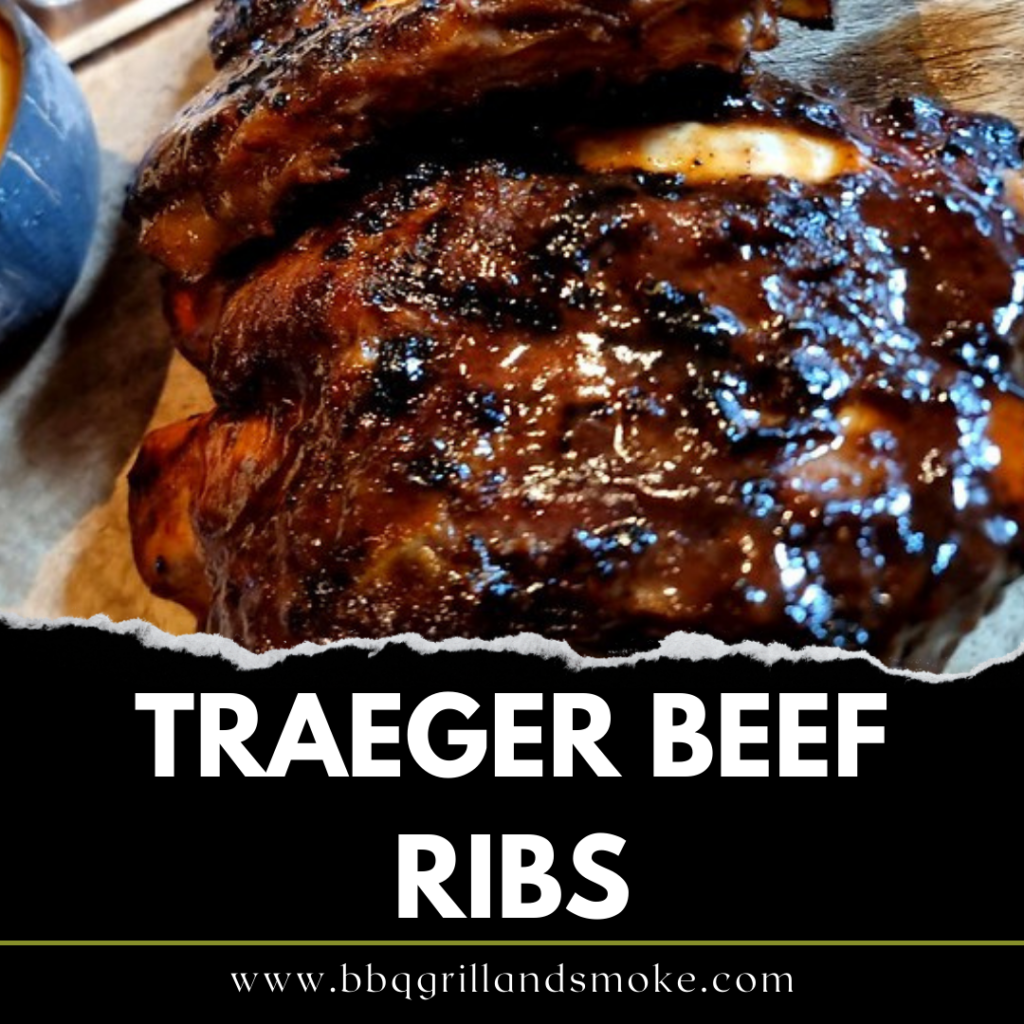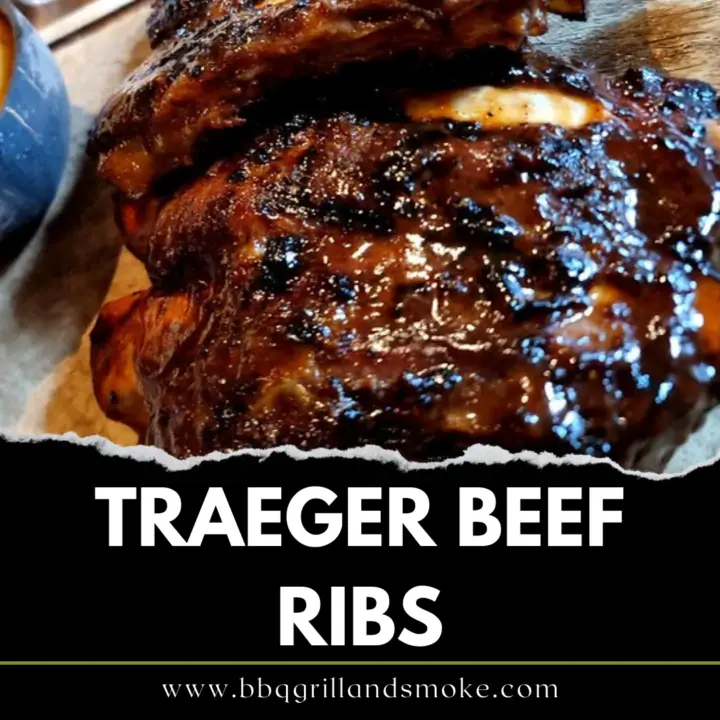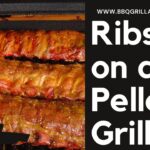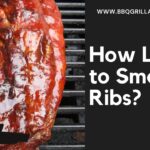Regarding smoking beef ribs, nothing compares to the delicious flavor and juicy tenderness a Traeger grill can deliver. Whether you’re a BBQ veteran or a beginner eager to impress, this guide will walk you through everything you need to know about making the perfect Traeger beef ribs. These ribs are smoky, rich, and fall-off-the-bone good — ideal for a weekend cookout or any special occasion.

Why Choose Traeger for Beef Ribs?
Traeger grills are pellet smokers, which means they use wood pellets to give your meat a rich, smoky flavor. The great thing about a Traeger is that it maintains a steady temperature, so you don’t have to keep checking every few minutes. It’s like a set-it-and-forget-it smoker — ideal for low-and-slow BBQ.
Beef ribs are often overshadowed by pork ribs, but they pack a ton of flavor and a meaty bite that many BBQ lovers prefer. When slow-smoked, the fat renders down beautifully, keeping the meat moist and flavorful.
Types of Beef Ribs
Before we dive into the recipe, it’s good to know what type of beef ribs you’re working with:
- Back Ribs – These are cut from the rib section and have less meat than short ribs.
- Short Ribs – Heavier, meatier, and a favorite for smoking.
- Plate Ribs (Dino Ribs) – These are the king of beef ribs, huge and packed with flavor.
For this recipe, we’re going with beef short ribs, but the technique works for plate ribs too.
Traeger Beef Ribs Recipe
Ingredients:
- 3 to 4 lbs beef short ribs (bone-in)
- 2 tablespoons yellow mustard (as a binder)
- 3 tablespoons kosher salt
- 3 tablespoons coarse black pepper
- 1 tablespoon garlic powder
- 1 tablespoon onion powder
- 1 tablespoon smoked paprika
- ½ cup beef broth (for spritzing)
- Wood pellets (oak, hickory, or mesquite preferred)
Step-by-Step Instructions
Step 1: Prep the Ribs
Start by removing the membrane on the bone side of the ribs. This thin layer can get tough during smoking. Use a paper towel to get a good grip and peel it off carefully. Rinse the ribs and pat them dry.
Step 2: Season Generously
Coat the ribs lightly with yellow mustard — this helps the rub stick. Then mix all the dry seasonings in a bowl and coat the ribs evenly on all sides. Let them rest at room temperature for 30-45 minutes while your Traeger heats up.
Step 3: Preheat Your Traeger
Set your Traeger to 225°F and preheat it with the lid closed for about 15 minutes. Load it with oak or hickory pellets for a bold, smoky flavor.
Step 4: Smoke Low and Slow
Place the ribs directly on the grill, bone-side down. Smoke at 225°F for 3 hours. During this stage, don’t open the lid too much — let the smoke work its magic.
Step 5: Spritz for Moisture
After 3 hours, begin spritzing the ribs with beef broth every 30–45 minutes. This keeps them moist and helps build a great bark on the outside.
Step 6: Wrap for Tenderness
Around hour 4 or 5, check the color. When the ribs have a rich mahogany color and a nice bark, wrap them in butcher paper or foil. Add a little beef broth before sealing. Return to the Traeger and continue cooking.
Step 7: Cook Until Tender
Keep smoking at 225°F until the ribs reach an internal temperature of 203°F–208°F. This usually takes 6 to 8 hours total. Use a meat thermometer and feel for probe tenderness (it should slide in like butter).
Step 8: Rest Before Serving
Remove the ribs from the Traeger and let them rest, still wrapped, for at least 30 minutes. This lets the juices redistribute through the meat.
Step 9: Slice and Serve
Unwrap, slice between the bones, and serve! These ribs are flavorful enough on their own, but you can serve them with BBQ sauce on the side if you like.
Serving Suggestions
Traeger beef ribs go great with classic BBQ sides. Think coleslaw, baked beans, cornbread, or grilled corn on the cob. For drinks, a cold beer or sweet tea pairs perfectly.
You can also shred the meat and use it for sandwiches, tacos, or sliders. The smoky flavor works well in just about any form.
Tips for Success
- Always check the internal temperature, not just the clock.
- Let the ribs rest after cooking — don’t skip this step!
- Use butcher paper instead of foil if you want a better bark.
Troubleshooting Common Mistakes
- Dry ribs? You may have overcooked or skipped spritzing.
- Tough ribs? They probably need more time. Keep going until probe tender.
- Too smoky? Try a milder wood like pecan next time.
Final Thoughts
Making Traeger beef ribs is more about patience than skill. Once you learn the rhythm of low and slow smoking, you’ll be cranking out ribs that rival your favorite BBQ joint. With just a few ingredients and a bit of time, you can make ribs that are juicy, smoky, and unforgettable.
Whether it’s your first smoke or your fiftieth, this Traeger beef ribs recipe is a crowd-pleaser. Fire up your grill, relax, and get ready for some seriously good eats.

Traeger beef ribs
If you're ready to take your barbecue game to the next level, this is your ultimate guide to making perfect Traeger beef ribs.
Ingredients
- 3–4 lbs beef short ribs
- 2 tbsp yellow mustard
- 3 tbsp kosher salt
- 3 tbsp coarse black pepper
- 1 tbsp garlic powder
- 1 tbsp onion powder
- 1 tbsp smoked paprika
- ½ cup beef broth (for spritzing)
- Wood pellets (oak, hickory, mesquite)
Instructions
- Prep ribs: Remove membrane and dry them off.
- Season: Coat with mustard and dry rub.
- Preheat Traeger to 225°F with wood pellets.
- Smoke for 3 hours.
- Spritz with broth every 30–45 minutes after hour 3.
- Wrap ribs in butcher paper at the 4–5 hour mark.
- Continue smoking until internal temp hits 203°F–208°F.
- Rest for 30 minutes.





